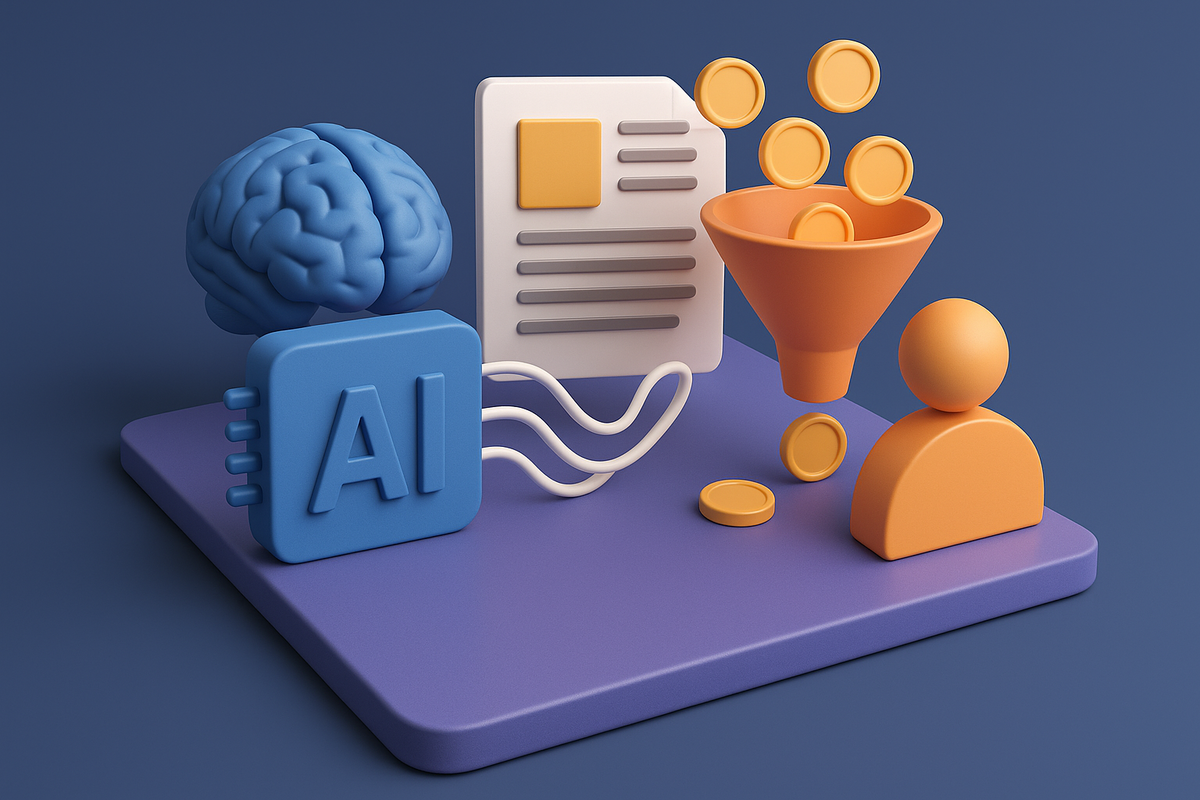The B2B marketing landscape is changing fast, and artificial intelligence (AI) is leading the charge. What was once a manual, intuition-driven process of distributing whitepapers and collecting leads has evolved into a data-powered, intelligent ecosystem.
In 2025, content syndication is no longer just about reach it’s about precision. AI and machine learning (ML) are helping marketers deliver content to the right audience, at the right time, through the right channels. The result? Higher-quality leads, improved conversion rates, and measurable ROI.
Let’s explore how AI is transforming content syndication and how forward-thinking marketers can leverage it to redefine B2B lead generation success.
The Problem with Traditional Content Syndication
Traditional syndication relied heavily on volume over value. Marketers would publish whitepapers across multiple channels, gather hundreds of leads, and hope some turned into qualified prospects.
But the problem was clear:
-
Many leads didn’t match the Ideal Customer Profile (ICP).
-
Marketers couldn’t tell which leads had genuine intent.
-
Follow-up campaigns wasted time nurturing the wrong audience.
In an era where data privacy, buyer intent, and personalization define success, this old model doesn’t cut it anymore. AI has entered the picture to solve exactly that.
How AI Is Transforming B2B Content Syndication
1. Predictive Targeting for Precision Outreach
AI analyzes vast datasets from firmographics and technographics to behavioral signals to identify who is most likely to engage with your whitepaper.
Instead of broad targeting, platforms powered by AI predict which professionals are currently in-market for your solution. For example:
-
A FinTech firm targeting CFOs in the SaaS sector.
-
A cybersecurity brand looking for IT decision-makers at mid-sized enterprises.
This predictive modeling ensures every lead generated is relevant, saving marketing budgets while boosting conversion potential.
2. Smart Content Matching
AI doesn’t just target audiences — it matches the right content to the right person. Using NLP (Natural Language Processing) and semantic analysis, platforms like Whitepapers Online can understand a user’s intent and recommend the most relevant whitepaper or report.
Think of it as personalized content syndication — where every prospect sees an asset that aligns with their pain points, not just a random PDF.
This approach dramatically increases download rates, engagement time, and lead quality.
3. Lead Scoring and Qualification
Once a lead engages, AI-powered algorithms score them based on:
-
Time spent reading your whitepaper.
-
Frequency of visits.
-
Job title and company relevance.
-
Historical engagement across campaigns.
This automated lead scoring system filters out low-quality or irrelevant contacts, sending only the most promising prospects to sales teams.
As a result, marketers no longer need to rely on guesswork — they can prioritize leads most likely to convert.
4. Continuous Learning for Campaign Optimization
Machine learning ensures every campaign becomes smarter over time. As more data flows in, the system refines:
-
Which industries engage most.
-
What content formats perform best.
-
Which syndication channels deliver the highest ROI.
This feedback loop turns content syndication into a self-optimizing engine — one that constantly improves performance without additional human input.
5. AI-Powered Analytics and Attribution
Gone are the days of unclear attribution models. AI tools now track a lead’s journey across touchpoints — from the first whitepaper download to the final conversion.
Advanced analytics can reveal insights like:
-
Which content assets generated the highest-value leads.
-
How different industries engage with your assets.
-
The exact ROI of your content syndication campaigns.
This transparency empowers marketers to make data-driven investment decisions, doubling down on what truly works.
Why AI-Driven Syndication Outperforms Manual Campaigns
| Factor | Traditional Syndication | AI-Driven Syndication |
|---|---|---|
| Targeting | Broad audience | Predictive and intent-based |
| Lead Quality | Mixed | Highly qualified |
| Optimization | Manual adjustments | Continuous learning |
| ROI Tracking | Limited | Real-time and transparent |
| Personalization | Generic distribution | Smart content matching |
AI-powered syndication doesn’t just deliver more leads — it delivers the right leads, helping marketing and sales teams align more efficiently.
The Future: Predictive Syndication Networks
By 2026, we’ll see the rise of predictive syndication networks — platforms that use AI to forecast which industries, job roles, and geographies will produce the highest-quality leads before campaigns even begin.
These systems will integrate seamlessly with CRM and marketing automation tools, enabling marketers to:
-
Launch real-time adaptive campaigns.
-
Automatically retarget prospects showing high intent.
-
Use AI chatbots to continue conversations post-download.
The future of content syndication is autonomous, adaptive, and insight-driven.
Conclusion
The combination of AI and content syndication is reshaping B2B lead generation. What was once a volume-based tactic has become a precision marketing engine that prioritizes engagement, intent, and conversion potential.
By embracing AI-powered tools and platforms, marketers can syndicate smarter, measure deeper, and scale faster — turning every whitepaper into a true pipeline asset.
“Ready to boost your lead quality with AI-powered syndication? Partner with Whitepapers Online to target, engage, and convert your ideal B2B audience smarter and faster.”

